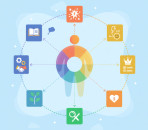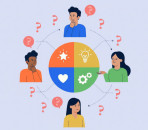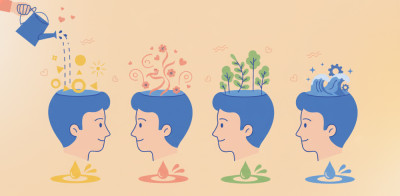Your True Colors Personality Test Online
New Updates



Real Colors Personality Test
Get StartedExplore Your Inner Self Through Color Personality Test
Across workplaces, classrooms, and coaching programs, a four-hue temperament model has become a friendly gateway to self-awareness. The idea is straightforward yet memorable: each color represents a cluster of drives, needs, and communication preferences that show up in daily life. People often recognize themselves quickly, which accelerates empathy and improves collaboration. Because the language is simple, teams can adopt it without jargon, and leaders can facilitate meaningful conversations without complex psychometrics.
The Benefits of a Color Test by Personality in Organizations
Advocates appreciate that the system blends clarity with nuance, allowing room for primary and secondary preferences rather than a single fixed label. In many organizations, the true colors personality test becomes a shared vocabulary for discussing strengths, stress triggers, and work styles without blame. Over time, that shared language reduces misunderstandings and creates psychological safety for candid feedback.
Beyond parlor-style quizzes, the model connects to research on temperament and trait expressions in real contexts. Some readers first encounter the method through a personality color test distributed during onboarding or retreat icebreakers. Facilitators often explain how personality test colors correspond to motivation patterns, preferred roles on teams, and typical responses under pressure. When reinforced with reflection and action plans, these insights move from novelty to measurable improvements in communication and performance.

How the Assessment Works: Scoring, Debriefing, and Color Dynamics
Most implementations guide you through brief ranking exercises that surface instinctive choices under time or social constraints. Across workshops, a color personality test usually sorts your responses into four categories and then highlights a dominant and a supporting style. Good facilitators emphasize that every person can access all hues, while preferences simply indicate where energy and comfort show first.
| Color | Core Drivers | Signature Strengths | Common Stressors | Ideal Contributions |
| Blue | Harmony, empathy, connection | Listening, support, loyalty | Conflict, cold logic, exclusion | Culture building, coaching, care |
| Gold | Stability, duty, order | Planning, reliability, follow-through | Ambiguity, missed deadlines, disorder | Project control, operations, compliance |
| Green | Logic, independence, mastery | Analysis, strategy, problem-solving | Emotionality, inefficiency, micromanagement | Systems design, research, innovation |
| Orange | Freedom, action, variety | Adaptability, persuasion, boldness | Monotony, rigid rules, bureaucracy | Sales, rapid response, experimentation |
Interpreting this grid requires context, because situations may amplify or mute certain behaviors. Many curricula present the framework as a 4 color personality test so participants can quickly remember key patterns while exploring nuance in real scenarios. Skilled debriefs include role-play, reflection prompts, and action commitments that convert awareness into behavior change.
Labels are helpful only when applied with humility and curiosity. When debriefing results, the phrase color test personality is used by some practitioners to underscore preferences rather than hard categories. That stance preserves flexibility, reduces stereotyping, and promotes growth through intentional practice across the spectrum.
Color Code Personality Test: Communication, Teamwork, and Leadership
Practical payoffs show up when teams use color insights to design meetings, clarify roles, and set norms. Teams that previously clashed often discover that a color code personality test gives them a neutral, nonjudgmental way to discuss friction points. Managers can tailor one-on-ones, recognize contributions more precisely, and pace change in ways that honor different work rhythms.
- Hiring and onboarding become smoother when expectations are stated in behaviorally specific terms.
- Sales and service teams adapt pitches and support scripts to match client cues and preferences.
- Project managers blend planning depth with agility by assigning complementary roles across the color spectrum.
- Educators differentiate instruction and foster inclusive classroom climates that respect diverse motivations.
- Conflict resolution gains traction through shared language, active listening, and agreed-upon repair steps.
Leaders gain a blueprint for inclusive decision-making and change management by balancing clarity with creativity. Budget-conscious learners sometimes start with a free color code personality test to explore fit before deeper training. When combined with coaching, the model catalyzes habit shifts such as meeting design, feedback cadence, and energy-aware scheduling.
Long-term impact emerges when insights translate into daily behaviors visible to colleagues and stakeholders. For coaching depth, a color personality traits test can outline granular triggers and motivators that inform customized growth plans. Measuring outcomes through retention, engagement, and project cycle time helps convert soft insights into hard business results.

Getting Started: Taking the True Colors Personality Types Test
Adoption works best when you blend quick wins with thoughtful practice. In classrooms and youth programs, the real colors personality test is often paired with role-play and gamified exercises that bring concepts to life. Adults in professional settings can add reflection prompts to weekly routines, gradually adjusting communication choices and meeting formats.
Delivery options range from facilitated workshops to digital questionnaires with dashboards and reporting. Learners who value convenience frequently choose a color personality test online that includes instant scoring, study guides, and debrief videos. Companies often integrate results into onboarding portals and leadership programs to keep the language active beyond a single event.
- Clarify your goals: self-insight, team alignment, or leadership development.
- Choose a reputable provider with clear scoring and practical debrief resources.
- Schedule a debrief to turn insights into commitments and shared team norms.
- Revisit your profile after major role changes or new organizational priorities.
- Track behavior changes with simple metrics such as meeting efficiency and feedback frequency.
Momentum builds when teams connect insights to specific habits and measurable outcomes. Some providers promote a color personality test free option so newcomers can sample the experience before investing in certification or coaching. Regardless of entry point, the key is disciplined application that respects complexity while leveraging the clarity of four memorable colors.
Real Colors Personality Test
Get StartedFrequently Asked Questions
-
How accurate is this color-based framework?
It is best viewed as a practical lens rather than a medical-grade diagnostic, and its value grows when paired with reflection and feedback loops. For many newcomers, a free true colors personality test can provide enough signal to spark meaningful discussion and curiosity. Accuracy improves when results are used to guide experiments in communication and collaboration, not to lock people into rigid boxes.
-
Can I use the framework for hiring decisions?
Use it to inform conversations, never to gate candidates or reduce people to labels. Many HR teams rely on structured interviews, work samples, and validated assessments for selection, while color insights can support onboarding and team fit conversations afterward.
-
How do I compare this model with other tools I have taken?
Look for convergences across instruments and treat differences as prompts for inquiry rather than contradictions. Some users find it helpful to map outcomes from tools they’ve taken alongside my personality test true colors results for a more holistic view. Over time, patterns across sources reveal consistent strengths and growth edges that are dependable.
-
Is there a way to explore deeper than the four basic styles?
Yes, advanced workshops and coaching dig into blends, stress responses, and situational flexing. Many programs add nuance with development tracks that extend what you learn from a true colors personality types test into role-specific behaviors. That layered approach respects individuality while preserving a shared team language.
-
How often should I revisit my results?
Revisit your profile when roles change, responsibilities expand, or feedback suggests a shift in your behavioral patterns. Periodic reflection helps you refine communication strategies, update team agreements, and keep growth aligned with current goals.
 A Guide to Color-Based Personality Assessments You Can Take from Anywhere
A Guide to Color-Based Personality Assessments You Can Take from Anywhere